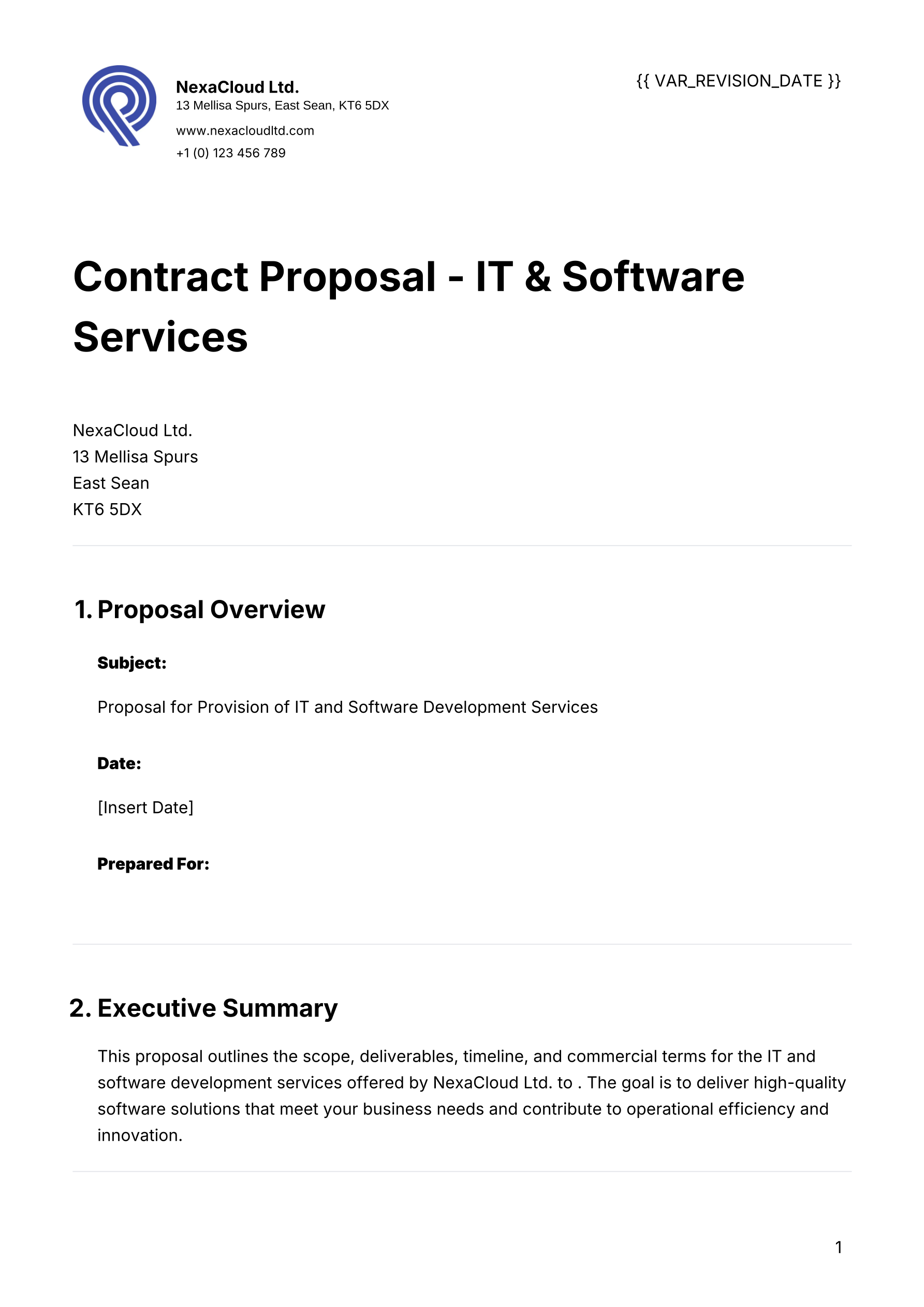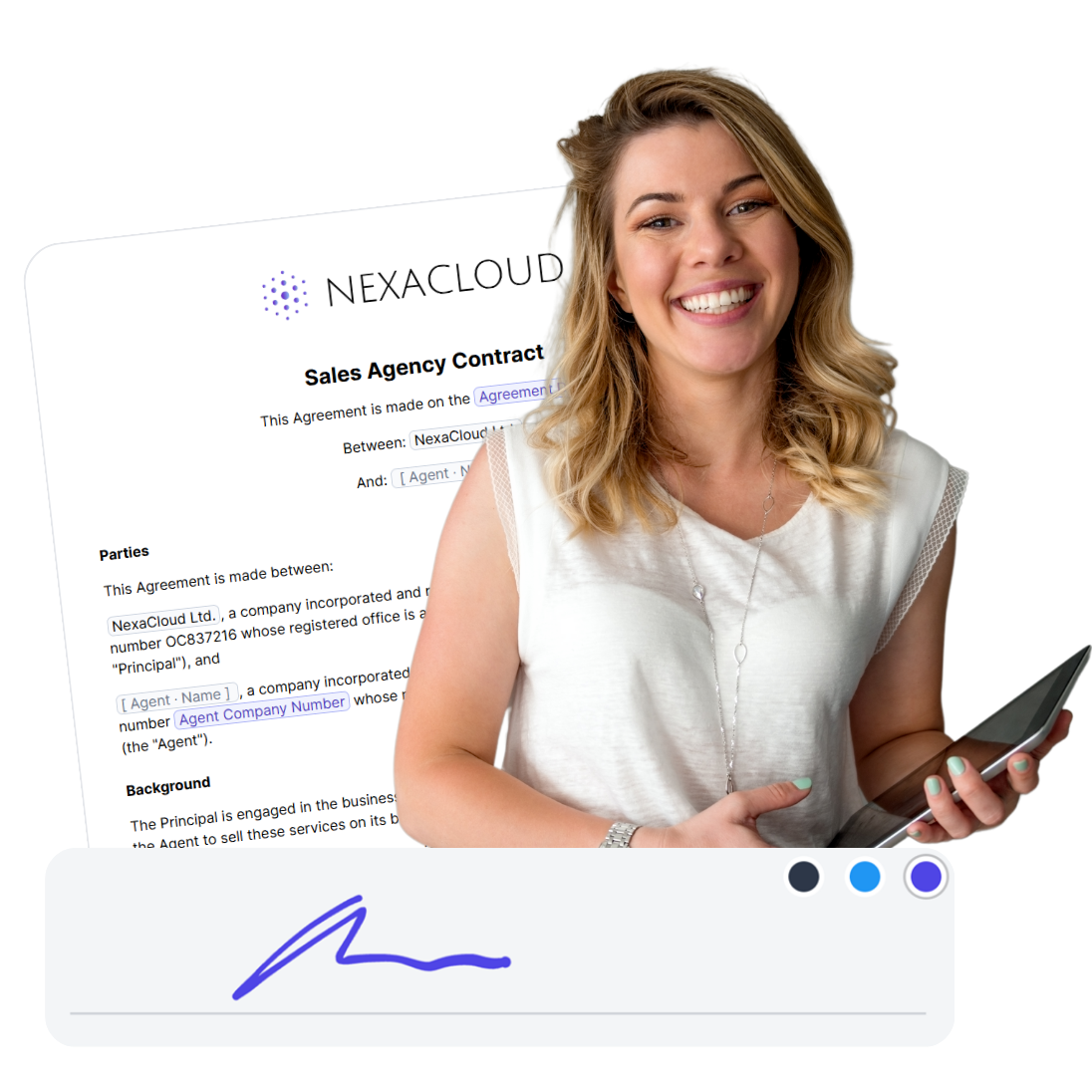How to Write a Contract Proposal (+Examples)
Imagine a freelance marketing consultant gearing up to pitch their services to a mid-sized tech company. Instead of firing off a quick email or tossing out a casual quote, they go full pro mode and build a contract proposal. A document that spells out exactly what services are on the table, how long the campaign’s going to run, what it’s going to cost, and how payments will roll in. This is exactly how a contract proposal works. In this blog post, were going to cover what is a contract proposal exactly, how to write one, and give you.a free contract proposal template to start with.
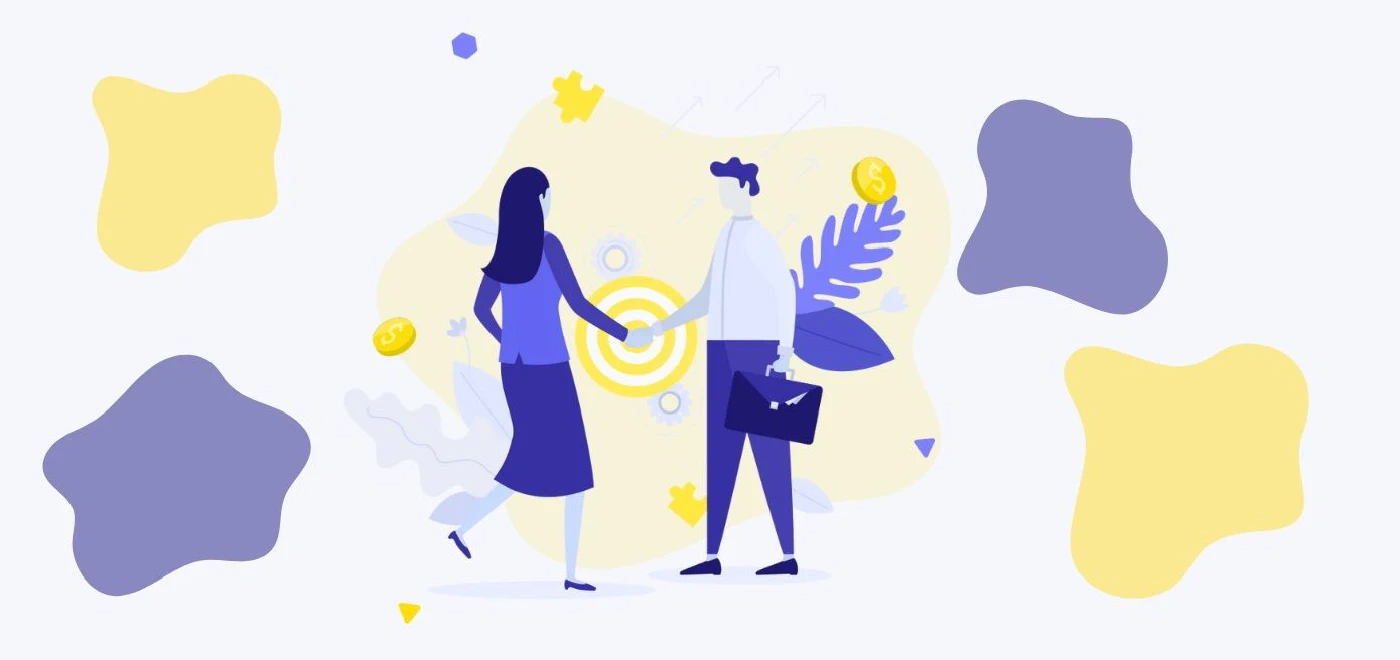
What is a Contract Proposal?
A contract proposal is a formal document that lays out the nuts and bolts of a potential agreement between two (or more) parties. At its core, it’s about structure: specific deliverables, clear timelines, transparent pricing, and the legal fine print. Think of it as the polished, professional cousin to those informal “let’s work together”.
This doc usually kicks off the serious part of a business relationship. It maps out the scope of work, defines who’s responsible for what, and sets the tone for what both sides expect to achieve. When done right, a contract proposal cuts through confusion and keeps future headaches at bay. No guesswork. No crossed wires.
In various industries—like construction, consulting, and technology—contract proposals are essential for project planning and collaboration. These proposals keep all stakeholders in sync before the real work starts. While they’re not always legally binding (yet), they’re often the stepping stone to a fully signed contract once everyone’s happy with the terms.
Sound familiar? Maybe you’ve heard of a business proposal or a statement of work (SOW) or Letter of Intent (LOI) doing a similar job—and you’re not wrong. They share the same endgame: get the deal rolling. But there are a few key differences that matter, especially when things get official. Here are the main differences between the three:
| 📝 Document | Contract Proposal | Letter of Intent (LOI) | Statement of Work (SOW) | Contract |
|---|---|---|---|---|
| 🎯 Purpose | Suggest terms for potential deal | Express intent to move forward | Define specific project details and deliverables | Finalize and legally bind the full agreement |
| ⚖️ Binding Nature | Usually not binding | Partially binding (specific clauses may apply) | Can be binding if part of a contract | Fully binding |
| 📄 Formality | Informal or semi-formal | More formal and structured | Detailed, technical, often attached to a contract | Highly formal and legal |
| 📌 Content Focus | High-level terms, pricing, deliverables | Key agreed terms, intent to negotiate final contract | Scope, timeline, milestones, responsibilities | Full legal terms, rights, obligations, penalties, etc. |
| ⏱️ Usage Stage | Early in negotiation | Midway – agreement in principle | After agreement on scope, before or as part of contract | Final stage – after full agreement |
| 👥 Audience | Internal or prospective partner | Both parties’ legal/business teams | Project teams, vendors, legal | Legal, financial, and operational stakeholders |
| 🔐 Legal Enforcement | Not enforceable | May be enforceable in parts | Enforceable if included in or referenced by contract | Fully enforceable |
Can a Proposal Be a Contract?
It depends. Like most things legal, you have to see how the proposal is built and whether it checks all the boxes for a binding agreement.
If that proposal includes mutual agreement, clear terms, consideration (read: something of value exchanged), and a shared intent to be legally bound—and both parties sign it—it can be considered as a contract.
If the proposal is accepted as is, without tweaks or haggling, and everyone signs on the dotted line, you’ve got yourself a binding agreement. On the flip side, if it’s still labeled “non-binding” or subject to negotiation, then it’s just a fancy conversation starter with no legal muscle.
So yes, a proposal can become a contract—but only if it walks and talks like one.
Types of Contract Proposals
Contract proposals come in various forms depending on the industry, purpose, and audience. While the core idea is consistent, the content and format often vary. Here’s a breakdown of the most common types:
Business Contract Proposals
These are the go-to in the private sector. Think of partnerships, services, or product deals. Across industries, they set the tone for professional engagements, blending strategic thinking with a splash of sales savvy.
These documents don’t just say, “Here’s what we do”—they show how a company’s solution syncs with a client’s goals, timeline, and expectations.
A good business proposal usually includes a company snapshot, a smart breakdown of the client’s problem, a tailored solution, and crystal-clear sections on scope, pricing, and terms. In high-stakes environments, fluff is the enemy—precision and clarity are everything. The language needs to be persuasive but prepped for contract conversion. Many of these proposals actually evolve into final agreements with just a few tweaks along the way.
💡 Good to Know: A business contract letter is the elevator pitch of formal documents—short, sharp, and straight to the point. It’s a way to introduce a proposal or confirm the basics of an agreement in writing. While it doesn’t dive as deep as a full contract proposal, it sets the tone, shows intent, and lays the groundwork for a more detailed deal down the line.
Example: business contract proposal letter (software services)
Subject: Proposal for Software Development & Integration Services
Dear [Client’s Name],
I hope this message finds you well. I’m writing to formally propose a collaboration between [Your Company Name], a leading provider of custom software solutions, and [Client’s Company Name], to support your upcoming [project or initiative name].
We understand your need for a scalable, secure, and user-friendly platform that aligns with your internal workflows and long-term digital strategy. Our team specializes in end-to-end software development, including UI/UX design, API integration, and post-launch support—tailored to meet enterprise-grade performance standards.
Our proposal includes:
- A detailed development roadmap with key milestones
- Custom-built software tailored to your specifications
- Full technical documentation and knowledge transfer
- Dedicated support during and after deployment
The total estimated timeline is 12 weeks, with a phased rollout to ensure minimal disruption to operations. A detailed breakdown of deliverables, pricing, and contractual terms is attached for your review.
We’re excited about the opportunity to bring our expertise to your team and help streamline your digital operations. Please let us know if you’d like to schedule a call to discuss the proposal further.
Warm regards,
[Your Full Name]
[Your Job Title]
[Your Company Name]
[Contact Information]
Government Contract Proposals
Government contract proposals are in a league of their own: high on structure, packed with specifics, and wrapped in layers of compliance. Unlike their commercial counterparts, these proposals are submitted in response to formal solicitations like RFPs (Requests for Proposals), ITBs (Invitations to Bid), or RFQs (Requests for Quotations). And yes, they come with a playbook of strict formatting, qualification criteria, and submission rules you don’t want to mess with.
In the public sector, it’s all about transparency, accountability, and fair play. That means your proposal needs to be airtight, containing detailed eligibility sections, legal declarations, pricing tables, regulatory checklists. That means being synced with labor laws, environmental standards, cybersecurity protocols, and a solid record of past performance.
Winning proposals hit the sweet spot between technical expertise and policy alignment. They speak the language of public stakeholders which is clear, formal, and rooted in purpose. And since both technical experts and administrative reviewers will give it a once-over, you’ve got to balance depth with clarity.
Searching for a contract management solution?
Find out how fynk can help you close deals faster and simplify your eSigning process – request a demo to see it in action.
How to Write a Contract Proposal
A well-written contract proposal is your foot in the door and often, your first big impression. It’s not just about sounding professional; it’s about solving problems, showcasing value, and starting a business relationship on solid, structured ground. Here’s your step-by-step game plan:
Step 1: Introduce Yourself or Your Business
Start strong with a crisp, confident intro. This is your chance to say who you are, what you do, and why that matters to them. Set the tone, build credibility, and connect your mission to their goals.
“At [Your Company], we specialize in cutting-edge IT solutions with a focus on cybersecurity. With 10+ years in the field, we’ve helped organizations like [Client A] protect their digital assets with measurable results.”
Step 2: Identify the Problem
Don’t dive straight into what you offer—first, prove you get their pain points. Show empathy and insight into their challenges to build trust right out of the gate.
“We understand that [Prospective Client] is aiming to strengthen data security in light of evolving compliance demands and increasing cyber threats.”
Step 3: Present Your Solution
Here’s where you shine. Lay out your tailored solution with clear, tangible benefits. You’re not just solving a problem, you’re adding value.
“To address this, we recommend deploying our Advanced Security Suite: a turnkey platform with real-time threat detection and built-in compliance tools.”
Step 4: Outline Project Scope & Deliverables
Break it all down. Phases, timelines, deliverables. Lay it out like a roadmap. Keep it clear, realistic, and easy to follow.
Phase 1: System Audit (Weeks 1–2)Phase 2: Deployment & Integration (Weeks 3–5)Phase 3: Training & Support (Weeks 6–7)
Step 5: Provide Pricing and Payment Terms
Transparency builds trust. Be upfront with costs and payment timelines—no smoke, no mirrors.
“The project cost is $50,000, payable in three installments:
• 40% at signing
• 40% after Phase 2
• 20% upon final delivery”
Step 6: Include Contract Terms & Legal Info
You don’t need to go full legalese, but cover the essentials: confidentiality, liability disclaimer, dispute resolution. Consult legal counsel if needed as this section protects everyone.
“All information shared will remain confidential. In the event of a dispute, both parties agree to resolve matters through mediation before legal escalation.”
Step 7: Signatures & Approval
Wrap it up with space for signatures. This formal touch makes it real—and actionable.
“By signing below, both parties agree to the terms outlined above.”
Looking for an easy way to sign all documents?
Sign
any
Document in Less than
a Minute.
Best Practices for Clarity and Persuasion
- Keep It Tight: Aim for 10–20 pages tops. That’s the sweet spot for keeping decision-makers engaged without losing them in a paper maze.
- Show, Don’t Tell: Use visuals—charts, timelines, mockups—to break up text and drive home your points.
- Make It Personal: Tailor each proposal. Generic = forgettable. Customized = memorable.
- Proof It Like a Pro: Typos and grammar slips = instant red flags. Run multiple checks before hitting send.
Common Mistakes to Avoid
- Info Overload: Don’t cram in every stat and detail. Focus on what matters most to this client, right now.
- Fuzzy Terms: Ambiguity kills deals. Be precise in your deliverables, timelines, and legal language.
- Too Self-Centered: This isn’t a resume—it’s a solution. Make sure the spotlight stays on the client’s needs.
- Ignoring the Rules: If the client gives proposal guidelines, follow them to the letter. Nothing screams “unprofessional” like ignoring the brief.
Free Contract Proposal Template
Using a solid template is both a time and sanity saver It gives your contract proposals a backbone, making sure you tick all the right boxes without reinventing the wheel every time. At fynk, we offer smart, customizable templates that adapt to your contract needs—making it easier to draft, edit, and collaborate all in one place. With real-time collaboration and version tracking, creating polished proposals has never been more efficient.
Easily use our contract proposal template for IT and software services by adding the key identifiers like client name, project scope, and dates. Then, customize the scope of work and deliverables to fit your service offering.
Try it for free!
Please keep in mind that none of the content on our blog should be considered legal advice. We understand the complexities and nuances of legal matters, and as much as we strive to ensure our information is accurate and useful, it cannot replace the personalized advice of a qualified legal professional.

Table of contents
Want product news and updates? Sign up for our newsletter.
Other posts in Contract-Management

SaaS contract management explained for buyers and vendors
If you work in SaaS, you know how quickly contracts can pile up. Each one comes with its own terms, renewals, …
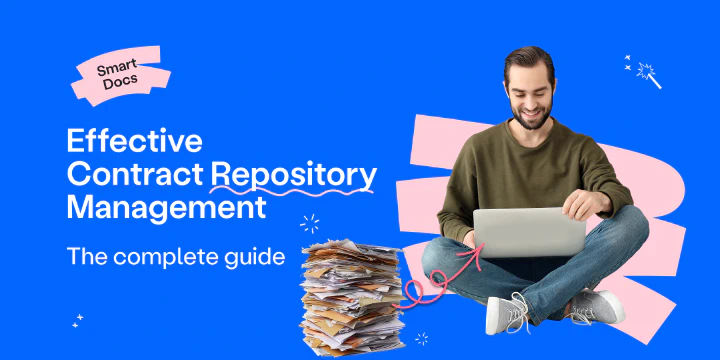
The Complete Guide to Effective Contract Repository Management
A contract repository is where every agreement your business depends on finally finds its place. No cluttered …
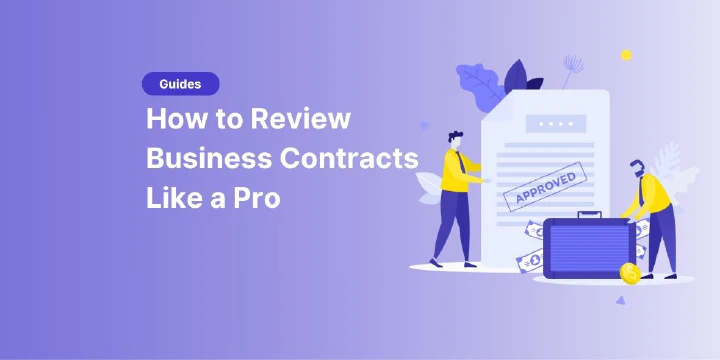
How to Review Business Contracts Like a Pro in 2025
When it comes to business contracts, what you don’t catch can hurt you. That’s why reviewing a business …
Contracts can be enjoyable. Get started with fynk today.
Companies using fynk's contract management software get work done faster than ever before. Ready to give valuable time back to your team?
Schedule demo
